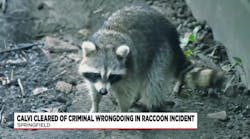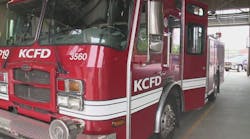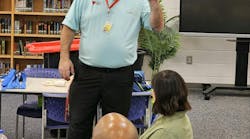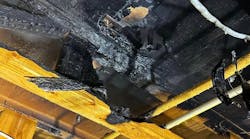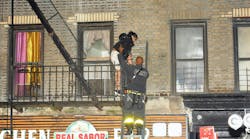During much of our conversations around the country, particularly around smaller fire departments, we often ask, "What do you do or how do you handle problems with your interface?"
This year's fire activity has already been pretty severe in the number and magnitude of events we have experienced in the northwest. California is just starting to ramp up for their fire season.
While operations folks are getting geared up, are our prevention bureaus doing the same?
During much of our conversations around the country, particularly around smaller fire departments, we often ask, "What do you do or how do you handle problems with your interface?"
Much of the time we get a blank stare and then a follow-up question "What do you mean?" or "What interface?" Okay, maybe our question is ambiguous or unclear, but to some degree, we see a lack of awareness or concentration on terminology surrounding the risk.
While there are lots of definitions for interface, in the fire prevention world we are generally speaking of the wildland interface. This is the area where forested or vegetated land abuts residential and/or commercial development.
We can get more specific with regard to occluded interface and intermix, but the point we are emphasizing is where buildings mix with forested or heavily vegetated land. This can be found in Anywhere, U.S.A.
We have seen serious wildland fires in Oklahoma, Florida, Georgia, New Jersey, and Kansas, not just in the Rocky Mountains.
Wherever there are large amounts of combustible vegetation, there is concern for fires damaging crops, timber, houses or businesses. In fact, some of the more dangerous fires are in light flashy fuels such as grasslands.
The speed at which fire will move through this fuel bed is astounding. As in our last two articles, firefighter safety is an issue that should be dealt with more proactively than reactively.
How can fire prevention bureaus deal with wildfire issues and provide a higher level of firefighter safety and community support?
The first element is wildland risk public awareness. In nearly every public meeting we attend where residents or business owners show up for the first time to discuss wildland fire risk, they have an underlying impression that a fire truck will show up in front of everyone's building as soon as they call 911. We know that is just not true.
It is important to engage them in a dialog about assumptions and expectations. Let them know your firefighting forces will be severely limited and that much of their outcome in a wildfire event is left up to them.
The next element is to provide citizens ways to protect their property through the proper separation of grass, brush and combustible items such as firewood from their homes or buildings.
Explain what survivable space means and what they can do to achieve that. Let them know what they need to do to assist your department in protecting themselves. Involve them as part of the firefighting force of sorts, not through direct suppression but by providing mitigation techniques to assist the overall suppression efforts.
Next, educate them on the need to be prepared. Evacuations are frequent occurrences during major wildfire events. An evacuation, large or small, is not an easy task. Help the homeowners or businesses understand what will be involved and the timelines that may be established.
Help them prioritize things to take such as medication, important papers (birth certificates, insurance policies, photos, wills, etc.), money, valuables (jewelry, guns, etc.), data from computers, which cars or autos to take and preplan how to deal with their pets. Small animals may be taken with while large animals may need advanced transport and relocation or some preparations for them to remain behind and survive on their own.
Lots of emotion can be stirred during these conversations. Some may not take it serious. The best you can do is make them aware and hopefully think of evacuation issues before they are needed.
Another support function fire prevention bureaus can provide is pubic communication and information during and after the event. Emergency forces will be taxed trying to get a handle on offensive and defensive efforts.
During the event, the public will be anxious because of the smoke, the activity and their obvious fear. Take the opportunity to provide public education, awareness and information.
Provide a good secure location to hold regular media briefings and public meetings. People are going to want to know where the fire is, where it is moving, how many people are involved in fighting it and obviously, how at risk their families, friends and belongings are.
Provide as many visual aids as possible such as maps, development plans, etc. Ask your local planning department to assist. Homes or lots that may be affected can be shown and updated on maps. If possible, show road maps highlighting evacuation routes.
Cell phones will be humming. Let these folks have information available that is timely and accurate they will communicate a lot for you. Remember, a picture is worth a thousand words. Manage the information beast before it manages you. Nothing is worse than trying to play catch-up after everything is under way.
Coordinate with local law enforcement agencies and other public entities. What is your plan for dealing with people if a fire occurs during business or school hours? Anxious parents will be in a rush to try to get their kids, which will jam up normal bus schedules and routes, jam streets and cause mass confusion for everyone.
People will be trying to return home from work. How can law enforcement agencies control access into and out of various areas? What are the best roads to use? What public radio station(s) do you want everyone to turn to for information? Can the schools shelter in place until a controlled evacuation can be performed?
These are all questions to be contemplated before an event occurs, not during. Generally, the fire prevention bureau is the best agency to facilitate these discussions because they already have relationships established. Remember, we said facilitate, not do all the work!
Let everyone own their part as that ownership will provide better distribution and coordination of all the tasks that will develop. Capitalize on these relationships, which will only enhance your full-time public education efforts.
The last element we recommend is having your bureau take an active lead in the National Incident Management System (NIMS) process. We have found fire prevention and administration staff positions provide an excellent resource pool for Plans, Logistics and even support for Operational functions during major large events.
Operations folks will be busy trying to deal with the event. Staff positions are a reliable pool for performing nearly all of the tasks needed to support an incident management team. However, don't wait for the incident and magically expect people to function in the rolls if they haven't had proper training.
Lots of training is available and essential for this to work well. Your operations folks will appreciate the help, your staff will feel valued and the public will be amazed at how well your event was handled.
The season is well upon us. Get ready, prepare and engage. Fire prevention bureaus are the best group to accomplish these tasks.
Brett Lacey is the Fire Marshal for the Colorado Springs (CO) Fire Department. He is a professional engineer and certified safety professional. Paul Valentine presently serves as Fire Marshal for the Mount Prospect Fire Department in Mount Prospect Illinois. Prior to the position of Fire Marshal, he was the fire protection engineer for the Mount Prospect Fire Department. Brett and Paul co - authored the text Fire Prevention Applications published by Fire Protection Publications, Stillwater Oklahoma. The text can be purchased here.

